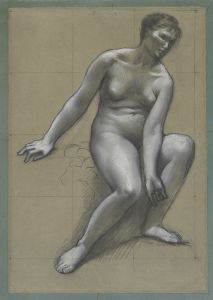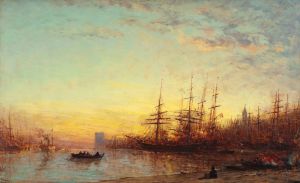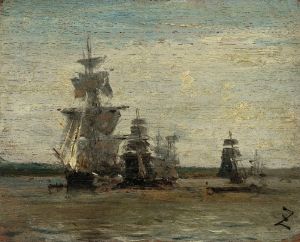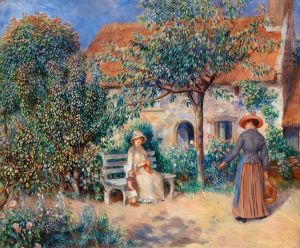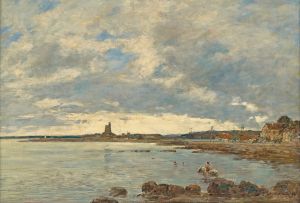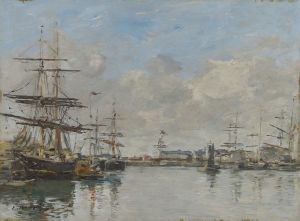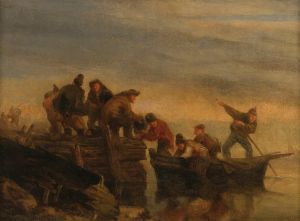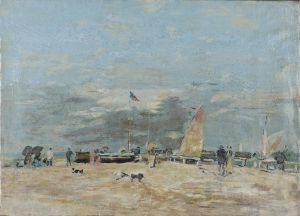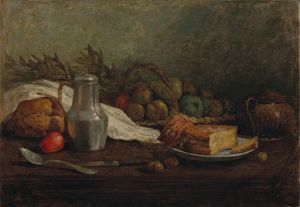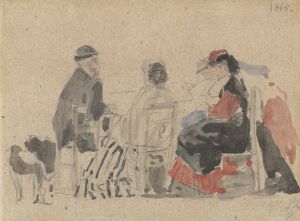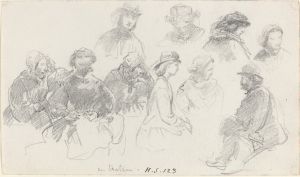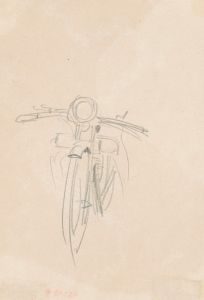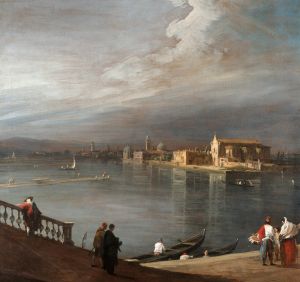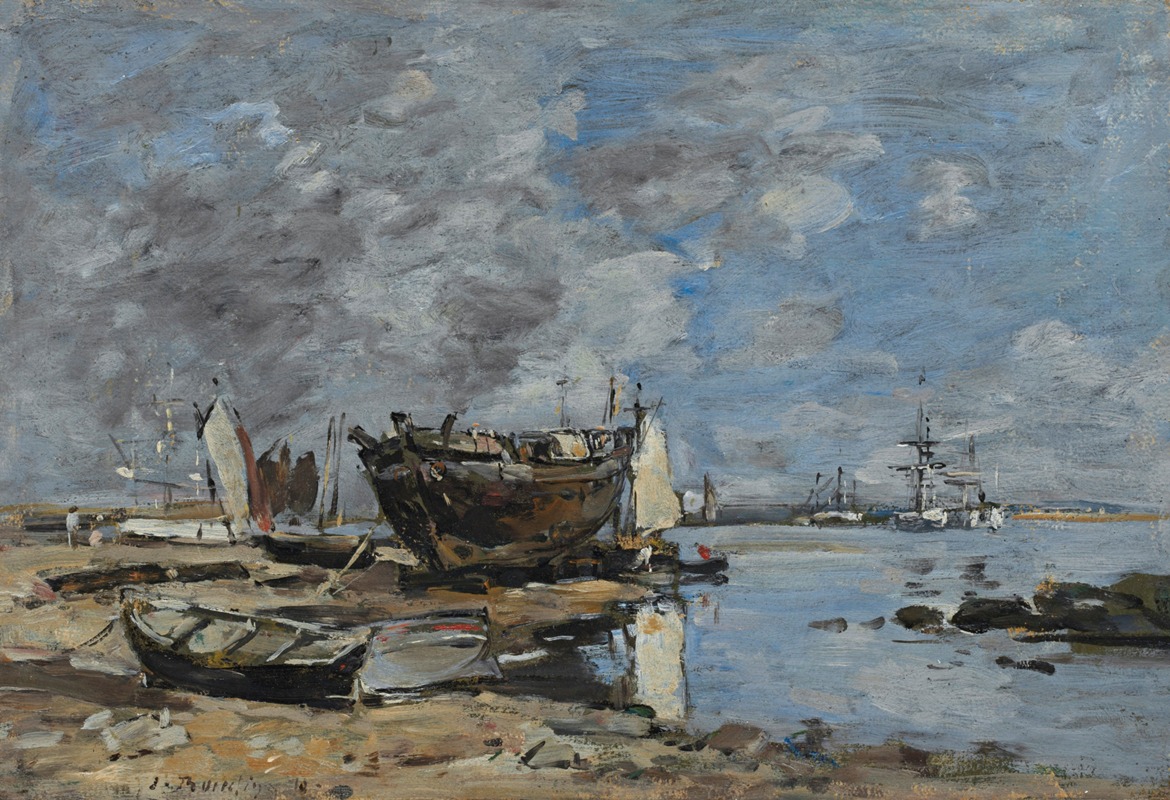
Plougastel, le passage du Bac
A hand-painted replica of Eugène Boudin’s masterpiece Plougastel, le passage du Bac, meticulously crafted by professional artists to capture the true essence of the original. Each piece is created with museum-quality canvas and rare mineral pigments, carefully painted by experienced artists with delicate brushstrokes and rich, layered colors to perfectly recreate the texture of the original artwork. Unlike machine-printed reproductions, this hand-painted version brings the painting to life, infused with the artist’s emotions and skill in every stroke. Whether for personal collection or home decoration, it instantly elevates the artistic atmosphere of any space.
"Plougastel, le passage du Bac" is a painting by the renowned French artist Eugène Boudin. Boudin, born on July 12, 1824, in Honfleur, France, is often celebrated as one of the precursors of the Impressionist movement. His works are particularly noted for their vibrant depiction of skies, seascapes, and coastal scenes.
This painting, created in 1870, captures a moment at the ferry crossing in Plougastel, a commune in the Finistère department of Brittany, France. The scene is set at the mouth of the Elorn River, where a ferry, or "bac" in French, is used to transport people and goods across the water. The composition reflects Boudin's keen interest in maritime life and his ability to convey the atmosphere of a specific locale with remarkable clarity and sensitivity.
In "Plougastel, le passage du Bac," Boudin employs his characteristic loose brushwork and a light palette to depict the bustling activity at the ferry crossing. The painting features a group of figures waiting to board the ferry, with the river and the distant landscape forming a serene backdrop. The sky, a dominant element in many of Boudin's works, is rendered with soft, diffused light, suggesting a typical day in Brittany.
Boudin's attention to the effects of light and atmosphere is evident in the way he captures the reflections on the water and the interplay of light and shadow on the figures and surrounding landscape. This focus on natural light and its changing qualities would later influence the Impressionists, including Claude Monet, who admired Boudin's work and considered him a mentor.
The painting is a testament to Boudin's skill in portraying everyday scenes with a sense of immediacy and realism. His ability to capture the transient effects of weather and light, combined with his interest in the lives of ordinary people, makes "Plougastel, le passage du Bac" a significant work in his oeuvre.
Today, Eugène Boudin's paintings are held in high regard and can be found in major museums and private collections around the world. "Plougastel, le passage du Bac" exemplifies his contribution to the development of landscape painting and his role in paving the way for the Impressionist movement.






